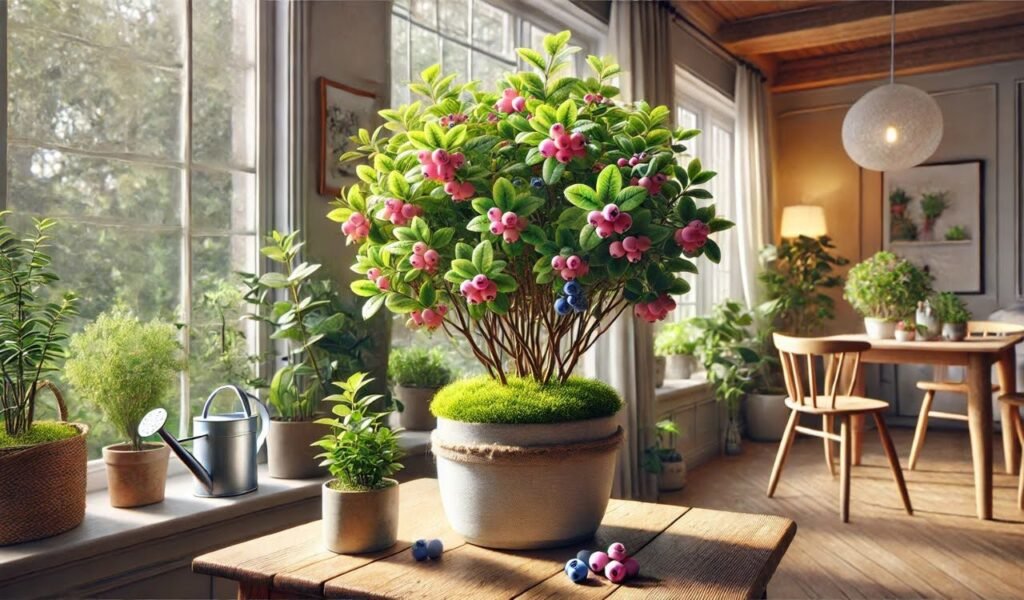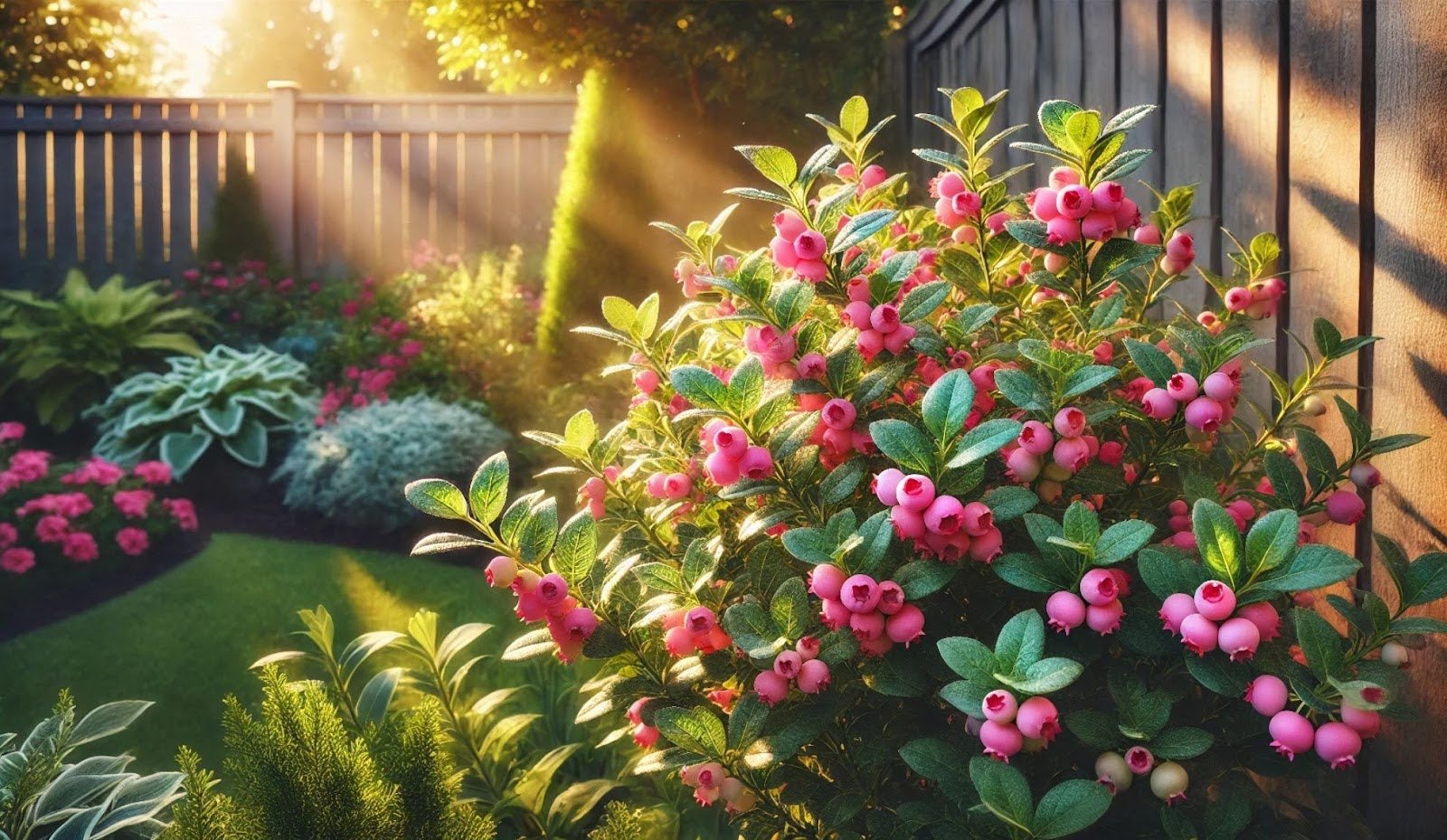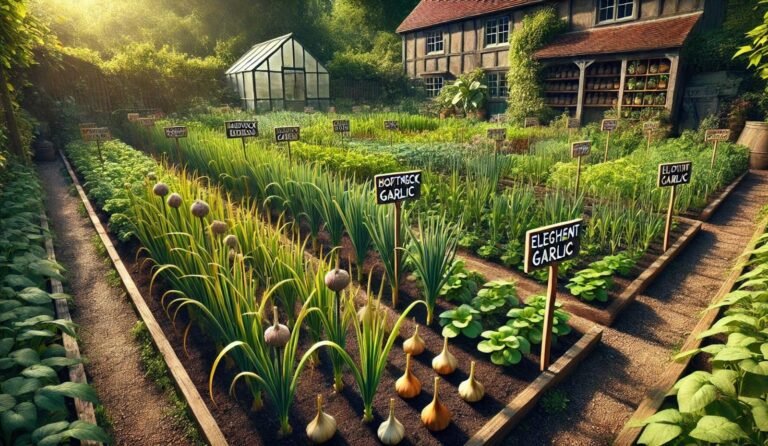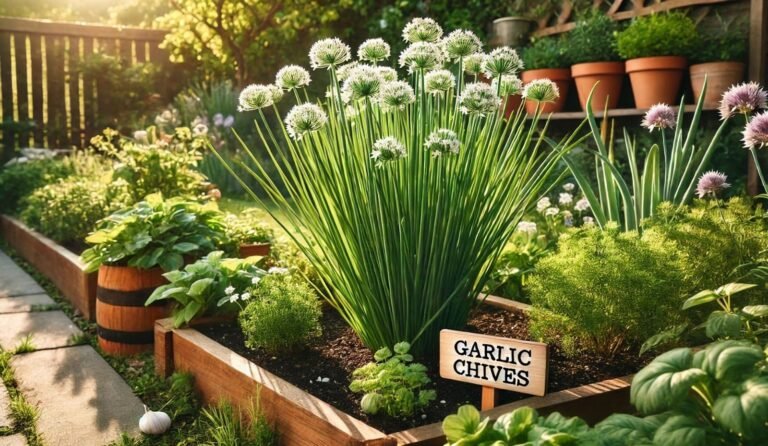Pink Lemonade Blueberry Plant: How to Grow & Care for It
The Pink Lemonade Blueberry Plant isn’t your average blueberry bush—it’s a showstopper. With its vibrant pink berries and deliciously sweet flavor, it’s a must-have for any home gardener. Not only does it produce eye-catching fruit, but it also thrives in both gardens and containers. Imagine picking fresh, juicy pink berries right from your backyard! Intrigued? Stick around, and I’ll show you exactly how to grow and care for this unique plant.
What is a Pink Lemonade Blueberry Plant?
The Pink Lemonade Blueberry Plant (scientific name: Vaccinium ‘Pink Lemonade’) is a deciduous fruit-bearing shrub that belongs to the Ericaceae family. This unique variety was developed by the USDA and is known for its bright pink berries, high sweetness level, and ornamental appeal.
Unlike traditional blueberry plants, which produce deep blue or purple fruits, this variety boasts vibrant pink berries that gradually transition from pale green to yellow, then to a deep pink as they ripen.
This plant is a rabbiteye blueberry hybrid, meaning it thrives in slightly warmer climates compared to northern highbush blueberries. It’s self-pollinating, but planting it alongside other blueberry varieties can increase fruit production.
Why Choose a Pink Lemonade Blueberry Plant?
There are plenty of reasons why gardeners and fruit enthusiasts are drawn to Pink Lemonade Blueberries. Here are some of its most outstanding features:
Unique Appearance: The vibrant pink berries offer a refreshing twist to the usual blue tones found in traditional blueberry plants, making them a visually striking addition to any garden.
Exceptionally Sweet Taste: These berries are much sweeter than regular blueberries, making them perfect for fresh eating, desserts, smoothies, or jams.
Ornamental Beauty: With lush green foliage, bright pink berries, and striking red-orange fall colors, this plant is as decorative as it is productive.
Cold Hardy & Heat Tolerant: Suitable for USDA zones 4-8, it can tolerate both cold winters and warm summers.
Ideal for Small Spaces & Containers: If you don’t have a large backyard, no worries! These plants thrive in pots, raised beds, or small garden spaces.
Self-Pollinating: While it doesn’t require another blueberry plant for pollination, growing multiple plants can increase berry yield.
How to Grow a Pink Lemonade Blueberry Plant

If you’re excited to grow your own Pink Lemonade Blueberry plant, you’ll need to ensure it gets the right conditions for optimal growth. Here’s what you need to know:
Best Growing Conditions
This plant thrives best in locations where it gets at least 6 to 8 hours of direct sunlight daily. If growing indoors, placing it near a south-facing window or supplementing it with grow lights can help maintain its growth and fruit production.
Soil Preferences: The key to a healthy blueberry plant is its soil. Blueberries require acidic soil with a pH between 4.5 and 5.5. If your soil is too alkaline, you can amend it with peat moss, sulfur, or pine bark to lower the pH. Ensure the soil is well-draining and rich in organic matter.
Temperature Needs: Pink Lemonade Blueberry plants are cold-hardy and can withstand temperatures as low as -20°F. However, in extremely cold areas, mulching around the base and covering the plant during harsh winters can help protect it.
Planting Process
Choosing a Location: Select a sunny spot with well-draining soil.
Spacing: If planting multiple shrubs, space them 3 to 4 feet apart to allow for proper air circulation and growth.
Planting Depth: Dig a hole twice as wide as the root ball and plant at the same depth as in the nursery container.
Mulching: Add a layer of pine needles, wood chips, or shredded bark to retain moisture and maintain soil acidity.
Caring for Your Pink Lemonade Blueberry Plants
Once planted, regular care is essential for maintaining a thriving plant.
Watering Requirements
Watering is crucial, especially during the first year of growth. Keep the soil moist but not waterlogged. Typically, blueberries require 1 to 2 inches of water per week. During hot summer months, increase watering frequency.
Fertilization
Feed your plant with a fertilizer designed for acid-loving plants, such as azalea or rhododendron fertilizer. Apply fertilizer in early spring and again in midsummer for optimal growth.
Pruning and Maintenance
Pruning helps promote better fruit production and prevents disease. In late winter or early spring, remove any dead, weak, or overcrowded branches. This improves airflow and sunlight penetration, leading to healthier plants.
Common Pests and Diseases
Like any plant, Pink Lemonade Blueberry shrubs can be susceptible to pests such as aphids, spider mites, and birds. Using netting or organic insecticides can help prevent damage.
Common diseases include powdery mildew and root rot, which can be mitigated by ensuring good airflow and well-drained soil.
Harvesting and Storing Pink Lemonade Blueberries

One of the most rewarding moments for any gardener is harvesting homegrown fruits. Pink Lemonade Blueberries are typically ready for harvest in late summer to early fall. Unlike traditional blueberries, these berries don’t turn blue but ripen to a deep pink shade.
How to Harvest:
Gently pick the berries once they turn completely pink and slightly soft to the touch. Avoid picking too early, as the sweetness intensifies when fully ripe.
Storage Tips:
Store fresh berries in the refrigerator for up to one week. Freeze excess berries by spreading them on a baking sheet before transferring them to a sealed container. Use dried or frozen berries in smoothies, baked goods, or homemade jams.
Growing Pink Lemonade Blueberry Plants Indoors

If you lack outdoor space, growing Pink Lemonade Blueberries in containers is an excellent option. Use a pot that is at least 12-16 inches in diameter, with good drainage holes. Ensure the soil remains acidic and well-drained, and place the plant in a bright, sunny window or under grow lights for at least 6-8 hours per day.
Common Problems and Solutions
- My Blueberries Aren’t Turning Pink!
Solution: The berries need full sun exposure to ripen fully. Ensure they’re getting adequate sunlight and avoid picking them too early. - My Plant Isn’t Producing Berries!
Solution: Lack of fruiting is often due to poor soil conditions, inadequate sunlight, or improper pruning. Feed the plant with an acid-loving fertilizer and prune as needed. - My Leaves Are Turning Yellow!
Solution: This is often a sign of iron deficiency due to high soil pH. Amend the soil with sulfur or iron sulfate to maintain acidity.
FAQ
What is a Pink Lemonade Blueberry Plant?
It’s a unique blueberry variety that produces sweet pink berries instead of blue ones.
Is the Pink Lemonade Blueberry Plant self-pollinating?
Yes, it’s self-pollinating, but planting multiple bushes can increase yield.
What kind of soil does it need?
It thrives in acidic, well-drained soil with a pH between 4.5 and 5.5.
How much sunlight does it require?
It needs at least 6-8 hours of direct sunlight daily for best growth.
Can I grow it in a container?
Yes! It grows well in pots or raised beds if the soil is acidic and drains well.
When do the berries ripen?
The berries ripen in late summer to early fall, turning from green to pink.
Final Thoughts
The Pink Lemonade Blueberry Plant is a fantastic addition to any home garden, offering both visual appeal and deliciously sweet fruit. Whether you’re an experienced gardener or a beginner, growing these unique berries is a fun and rewarding experience.
With proper care, you’ll enjoy an abundant harvest of vibrant pink, juicy berries that make a stunning and tasty treat. If you’re looking for a fruit plant that’s as beautiful as it is delicious, the Pink Lemonade Blueberry Plant is a must-have. Happy gardening!







